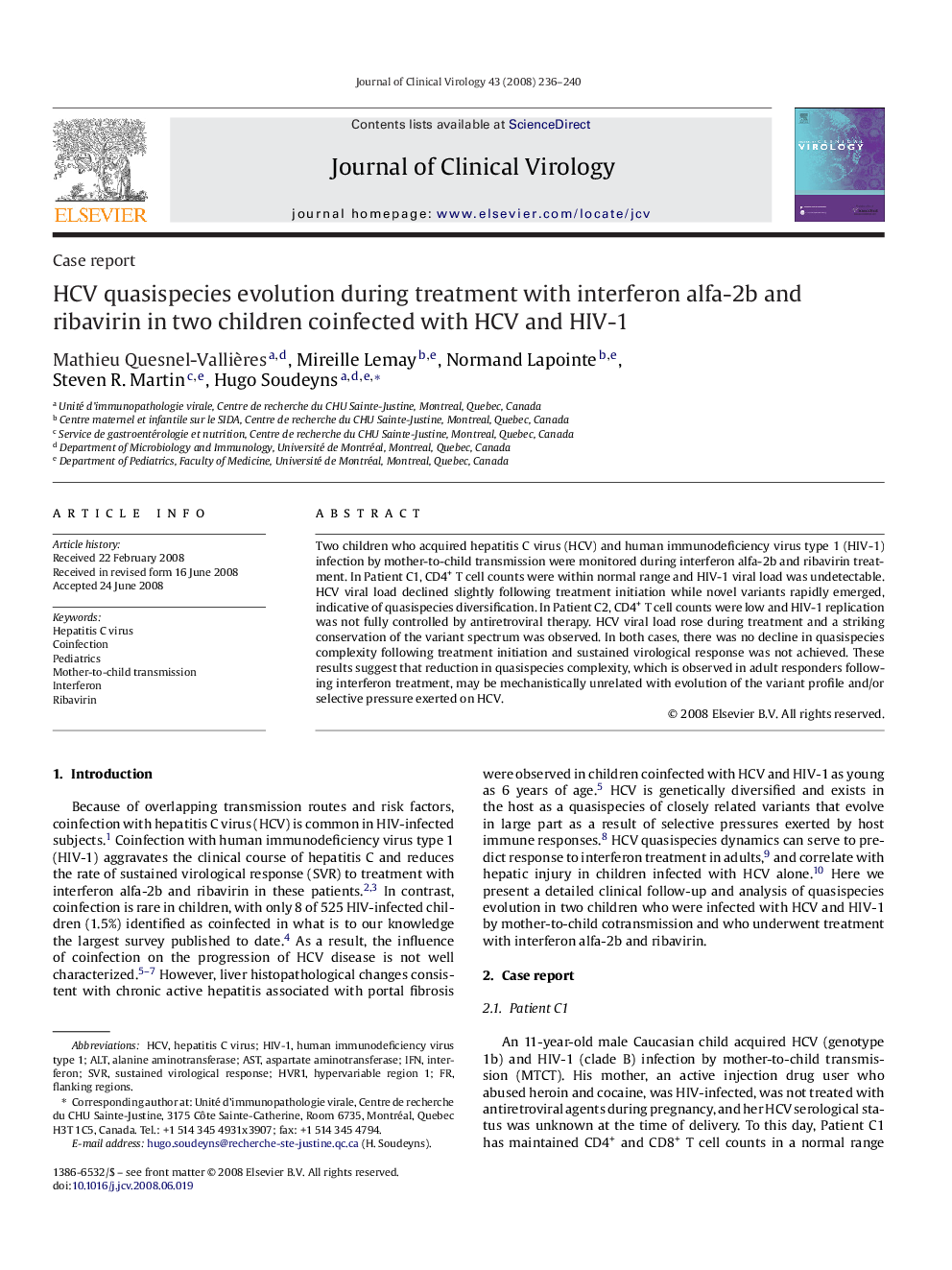| Article ID | Journal | Published Year | Pages | File Type |
|---|---|---|---|---|
| 3370555 | Journal of Clinical Virology | 2008 | 5 Pages |
Abstract
Two children who acquired hepatitis C virus (HCV) and human immunodeficiency virus type 1 (HIV-1) infection by mother-to-child transmission were monitored during interferon alfa-2b and ribavirin treatment. In Patient C1, CD4+ T cell counts were within normal range and HIV-1 viral load was undetectable. HCV viral load declined slightly following treatment initiation while novel variants rapidly emerged, indicative of quasispecies diversification. In Patient C2, CD4+ T cell counts were low and HIV-1 replication was not fully controlled by antiretroviral therapy. HCV viral load rose during treatment and a striking conservation of the variant spectrum was observed. In both cases, there was no decline in quasispecies complexity following treatment initiation and sustained virological response was not achieved. These results suggest that reduction in quasispecies complexity, which is observed in adult responders following interferon treatment, may be mechanistically unrelated with evolution of the variant profile and/or selective pressure exerted on HCV.
Keywords
Related Topics
Life Sciences
Immunology and Microbiology
Applied Microbiology and Biotechnology
Authors
Mathieu Quesnel-Vallières, Mireille Lemay, Normand Lapointe, Steven R. Martin, Hugo Soudeyns,
